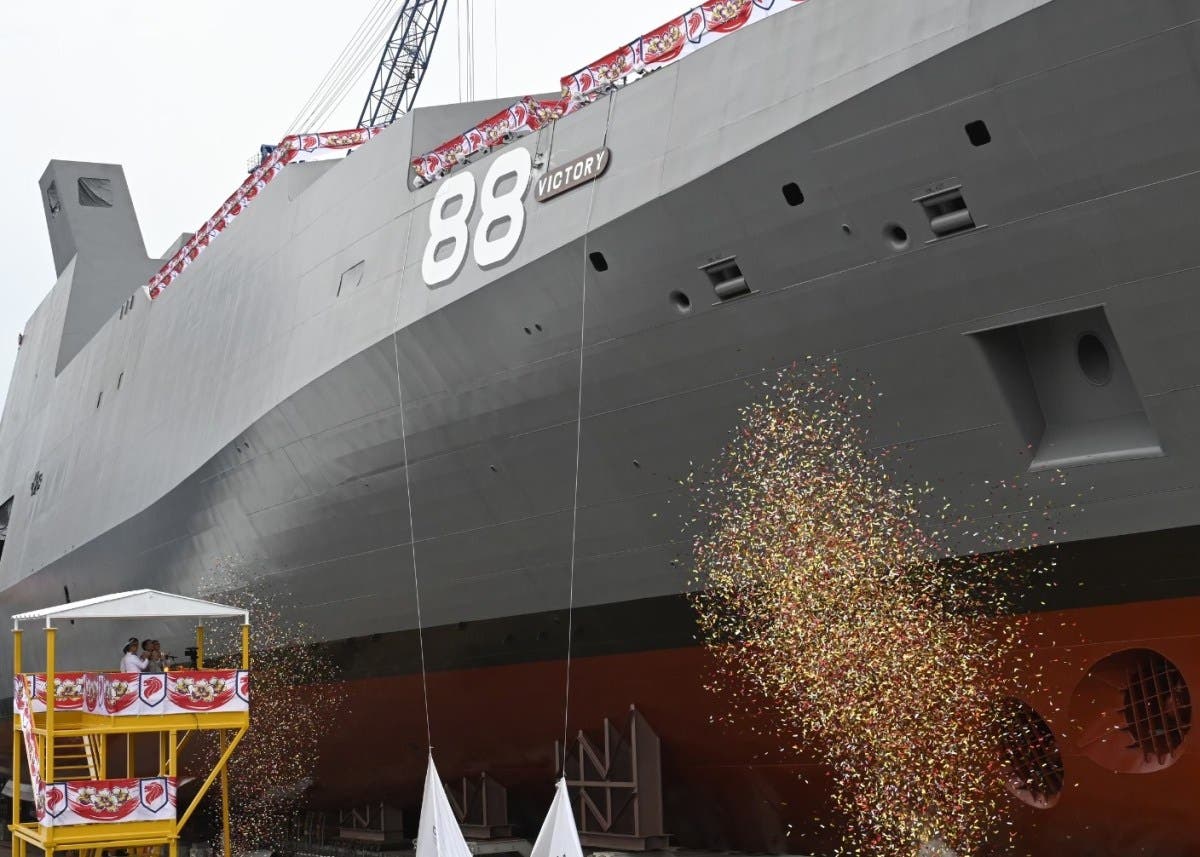URGENT UPDATE: Singapore has just launched its largest and most advanced warship to date, the Victory-class Multi-Role Combat Vessel (MRCV), in a critical move to enhance maritime security in the South China Sea. The vessel, unveiled at ST Engineering’s Benoi Shipyard on July 15, 2025, is designed to serve as a mothership for drones, ensuring the protection of vital sea lines of communication.
This launch comes amid rising tensions in the region, where overlapping sovereignty claims pose risks to maritime trade routes. Singapore’s Minister for Defense, Chan Chun Sing, emphasized the importance of maintaining open and secure sea lanes, stating, “It is critical to our lives and our livelihoods, and also to the global economy.”
The Victory measures 492 feet in length and displaces 8,800 tons, allowing it to operate for over 8,000 miles or 21 days without resupply. This advanced vessel combines the combat capabilities of modern frigates and the operational reach of unmanned vehicles, addressing the need for enhanced surveillance and defense in a rapidly evolving global security landscape.
Singapore, a strategic partner of the United States, is positioned at the southern end of the Strait of Malacca, a critical shipping route connecting the Indian Ocean to the South China Sea. The nation relies heavily on maritime routes, with 90 percent of its food imports arriving by sea. As such, ensuring these lines remain open is paramount for Singapore’s economic stability.
Minister Chan highlighted that the Victory-class vessels will replace the existing Victory-class missile corvettes, with a total of six ships planned for delivery by 2028. He stated, “Going forward, we will face an even tougher global security environment,” underscoring the urgency of bolstering Singapore’s naval capabilities.
As Singapore continues to enhance its defense collaboration with the United States, it has recently acquired four Boeing P-8 maritime patrol aircraft. The implications of these military advancements extend beyond Singapore, contributing to regional security architecture and international efforts to maintain unimpeded access to crucial sea routes.
The Victory will undergo outfitting, systems integration, and trials as its crew begins training. As the geopolitical landscape evolves, all eyes will be on Singapore’s next moves regarding additional military procurements from the U.S. and its ongoing commitment to safeguard maritime security.
Stay tuned for further updates on this developing story, as the implications for regional and global security are profound.
